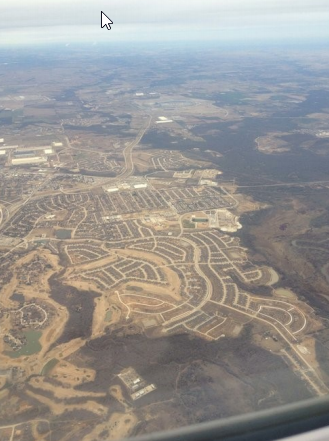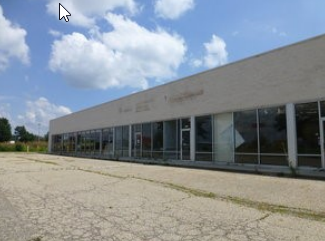Time to Stop Building Disposable Places

by Daniel Herriges
You hear it so often it sounds like a cliché: “Our ancestors used to build things to last. Now we build them to be thrown away.” Sometimes, this sentiment is a cliché or an oversimplification: when it comes to homes, for example, our ancestors built plenty of rickety wooden shacks. They’re just not standing today for us to pass judgment on. But our forebears did so because of a lack of resources; they built what they could, with the intention of improving upon it incrementally as they could afford to.
Disposability in modern society is different: it’s a function of our affluence, not our poverty. We make things without regard to their durability because we can afford to, or we think we can—from single-use personal items like razors, to larger items like furniture. (Many of us have a chair or table that belonged to a grandparent or great-grandparent; how much of today’s IKEA wares do we expect our own grandchildren to hold onto?)
But what happens when we apply that mindset to the very communities we live and work in? The Manhattan Institute’s Michael Hendrix, writing for Dallas News, wants to sound the alarm about the consequences of “disposable” growth. In an op-ed drawing heavily on the work of Strong Towns, titled Photo via Wikimedia Commons Southern Oregon Business Journal 19 “North Texas must stop building disposable suburbs,” Hendrix writes:
I grew up on a street to nowhere, lined with starter homes for young families like ours. It was 1980s Arlington, and this was our American dream.
Twenty years later, the dream had faded. Empty strip malls floated in oceans of asphalt. Weeds grew like they were reclaiming suburbia to nature. Our neighborhood was bought, used and thrown away in a single generation. A disposable suburb.
As a Strong Towns writer for four years, and reader for longer than that, I find it immensely gratifying to see our ideas not only catching fire out there in the broader consciousness, but expressed by someone else better than I could have done it myself. Hendrix has written a powerful, urgent indictment of the way we build our human habitat in 21st-century America.
Hendrix is writing about the Dallas-Fort Worth region, but the same can be said of any metro area in America. We all embarked, all at once, upon the same massive experiment in the post-WWII era. We all now build most of the places we plan to inhabit all at once, to a finished state, according to a massproduction model. And once they’re built, there is nothing for them to do but decline.
The Inexorable Slide Into Decline
Our suburban neighborhoods are places that are not intended to change. They are, in most cases, not even allowed—by zoning codes, HOA covenants, or the rigidity of their own design—to evolve and renew themselves through incremental redevelopment. As such, these are neighborhoods that will never look better than the year the first buyers close on the first homes. The vinyl siding will never be newer. The pavement will never be smoother. There is nowhere to go but down.
Hendrix describes vividly the depreciation of the places that represented the American dream in the 1950s through 1980s into places of growing poverty, mounting municipal debt, and crumbling asphalt today. He makes clear this is not all about cheap, shoddy design—though some of it is. The boldface emphasis is mine:
Suburban neighborhoods become disposable not simply because they have been designed poorly. They also have been priced poorly. When the bill comes due for cheap homes and sprawling infrastructure, the ROI just isn’t there for the renewal and repair needed for a truly sustainable city. So people move on and places deteriorate, leaving the bill for future generations.

The “people move on” part is a key part of the story here. If you live in a community that has some intrinsic uniqueness, some raison d’etre, you are apt to get residents who are committed to staying put and reinvesting in the place.
On the other hand, a lot of suburban American neighborhoods are interchangeable in form and function. The appeal of many of these places to home buyers is their newness: full stop. When they become older and less desirable, and the bills start to mount for deferred maintenance of the public infrastructure, what are residents with the means to move going to do? Why would they stay put? They can pay lower taxes and enjoy a nicer environment in the next, newest suburb down the line.
And so, we get disposable places, because they are places that could be anywhere and thus are nowhere. James Howard Kunstler made this observation in 1993’s seminal The Geography of Nowhere. Kunstler’s particular focus was on what makes much of modern suburbia unlovable from an architecture and design standpoint.
Strong Town’s contribution to the debate, though, has been to shine a harsh spotlight on the financial unsustainability of places that never had a “there” there. Hendrix gets it, sticking to financial arguments, and he captures the Growth Ponzi Scheme in a nutshell:

Those quickly built neighborhoods of vinyl homes on the edge of town, that gas station and strip mall down the way, aren’t worth much and they don’t make much, either for their owners or the town. But installing the roads, pipes, and wires required to build the subdivision isn’t cheap, so the town scrounges up what money it can and goes in search of state and federal money. These dollars are multiplied into debt that’s poured into infrastructure that will hopefully be paid for by yet more new residents.
As long as growth begets growth, and fixed costs are spread over more assets, these suburbs survive. But when sprawl runs out of fuel, or the housing assembly line stops (such as in a financial crisis), virtuous cycles of growth can quickly devolve into vicious cycles of decline.
What’s the alternative? There are no easy answers, but Hendrix concludes with a call for a new mindset, not a simple, prescriptive set of changes to zoning codes or the like. A better mindset toward growth would insist that we build places that:
• Produce enough private wealth to sustain the public investment that supports them
• Are adaptable and reusable as economic conditions change and businesses open and close
• Are built out incrementally, instead of all-at-once through debt-financed building binges
This is a Strong Towns approach. And more Americans than ever are recognizing, and articulating for themselves, just how badly we need it.

Daniel Herriges Daniel Herriges (Twitter: @DanielStrTowns) serves as Content Manager for Strong Towns, and has been a regular contributor since 2015. He is also a founding member of the organization. Daniel has a Masters in Urban and Regional Planning from the University of Minnesota. His obsession with maps began before he could read. His budding environmentalism can be traced back to age 4, when he yelled at his parents for stepping on weeds growing in sidewalk cracks. His love of great urban design and human-scaled, livable places has also been lifelong. Daniel has a B.A. from Stanford University in Human Biology with a concentration in Conservation and Sustainable Development. After college, he worked as an environmental activist for several years, in support of indigenous people’s rights and conservation in the Amazon rainforest. He can often be found hiking or cycling. Daniel is from St. Paul, Minnesota.


Advertisement